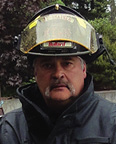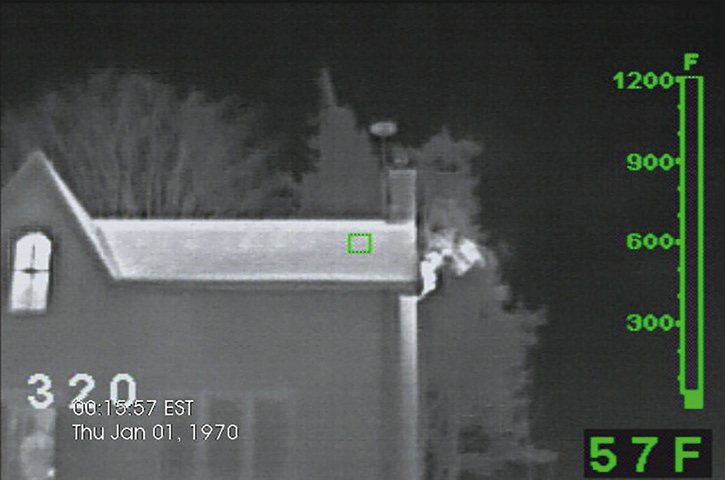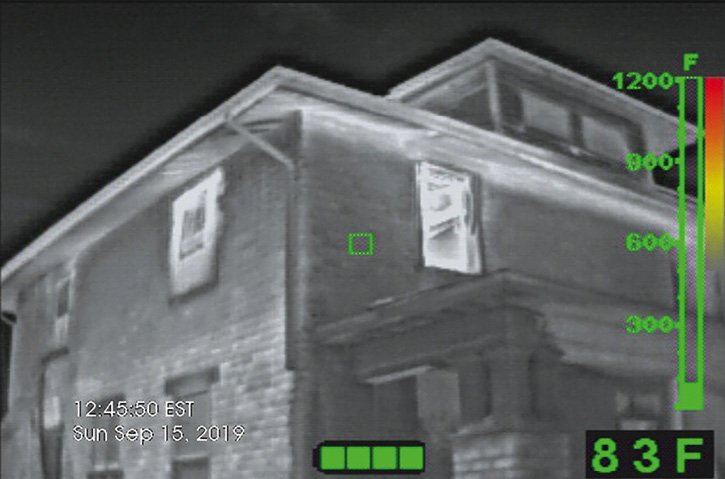
BY MANFRED KIHN

Think about a typical fire scene. The first unit arrives on the scene with firefighters who are seeing thick, black smoke pouring from the structure and flames shooting out from the windows and doors. Where’s the thermal imager (TI)? Who’s responsible for grabbing the TI off the truck?
Fire suppression is the job most often associated with firefighters. Suppression, control, and safety restoration at the scene are our goals. When lives and property are at risk, we are the first to mount an attack. Having a TI with the crew during a fire attack is critical to meeting our goals.
A TI can help the crew only if someone has it. It can show thermal layers, a safe path for advancement, alternative exits, and the location of the heaviest fire. Using a TI can help you suppress a fire quickly, efficiently, and safely. Fire departments must have a plan in place to deploy the TI during fire attack. If at all possible, a TI should be on the first unit to arrive on the scene. If your TI is arriving on the third or fourth unit, it may be too late to help in the fire attack. It’s also critical that the TI be assigned to a firefighter to ensure it comes off the apparatus. Photos 1 and 2 depict what the crew might see when arriving on a fire scene. Photo 1 shows heat coming from the upper window on the Delta side of the structure. Photo 2 shows heat in the upper windows of the Charlie and Delta side.

1 Photos courtesy of Bullard.

It sounds so simple, but I can’t tell you how many times I’ve heard firefighters tell me that they needed their TI during a fire attack but left it on the truck. Having a plan in place for grabbing the TI off the truck that is compatible with your staffing is a must. Assign the TI to a specific person or seat to ensure it comes off the truck immediately. If you are on the first-arriving piece of apparatus, use the TI to view the structure as you approach. Roll down your window, because your TI cannot see through glass, and start scanning the scene. Areas of excessive heat buildup and the effects of natural ventilation can be quickly and accurately assessed before you get off the truck.
Now, on the scene, use three quick scans with your TI to assess the situation. Scan inside the structure to determine the direction of heat travel, scan the area of origin to help determine the fuel source and room configuration, and then scan after initial suppression to determine spread and ventilation efforts. We now have a plan for taking the TI off the apparatus during fire attack.
Can a TI help with the hoseline advancement? Absolutely! Set some training time aside to practice a few quick drills to help perfect hoseline operations while also helping firefighters become more comfortable with using the TI. Park your apparatus outside the firehouse so your company can practice stretching dry attack lines into the apparatus bay. Assign firefighters to specific seats to ensure that they all get practice leading out the attack line or backing up the line while carrying the TI. Have the hose team practice advancing the line and simulating area scans with the TI. This training helps the crew not only with advancing the hoseline but with realizing the value a TI lends to this fire attack tactic.
As the team advances, the firefighter using the TI cannot stare at the TI display the entire time but should use the TI to orient the team and then secure the TI while helping advance the line. For three- and four-person companies, this assistance on the line is especially important. From a tactical standpoint, it is preferable for any member of the team, except the nozzleman, to carry the TI. Whether it is another member or the company officer who uses the TI, it is better for a backup person to be responsible for this critical tool.
If the hose team uses a TI while advancing the line, it can find its way to the seat of the fire more quickly and, more importantly, more safely. The TI helps the team see objects that they would not otherwise see and allows them to navigate faster and with greater ease.
After practicing hoseline advancement with the TI, think about some of the unique fire risks in your response areas and how they might affect your hose advancement. Are there structures that might require you to bring additional tools? Do you have to reassign tools to ensure that the special tools, including the TI, make it into the structure? Can the designated TI person carry the extra tools as well and still advance the line? How are the extra tools carried to ensure that the TI is easily accessible?
For your TI to help in fire attack, first it must be present, and then it must be used. The TI must come off the apparatus early and often. Having your TI as you arrive on scene and as you exit the apparatus can make a huge operational difference and will undoubtedly help increase the safety of the crew.
Manfred Kihn is a 19-year veteran of the fire service, having served as an ambulance officer, emergency services specialist, firefighter, captain, and fire chief. He has been a member of Bullard’s Emergency Responder team since 2005 and is the company’s fire training specialist for thermal imaging technology. He is certified through the Law Enforcement Thermographers’ Association (LETA) as a thermal imaging instructor and is a recipient of the Ontario Medal for Firefighters Bravery. If you have questions about thermal imaging, you can e-mail him at manfred_kihn@bullard.com.

